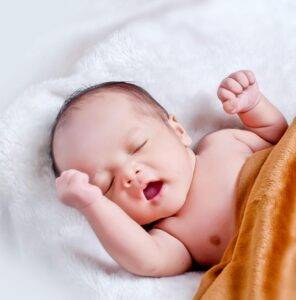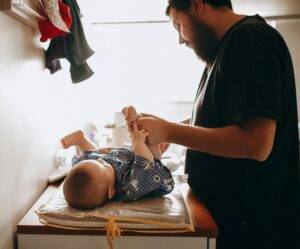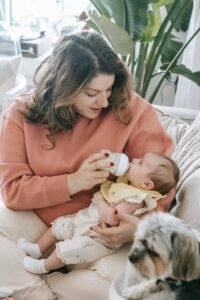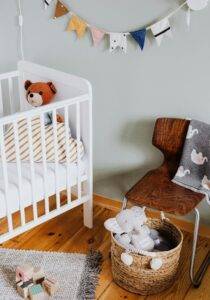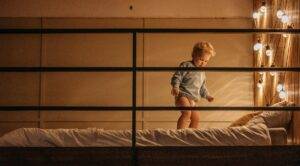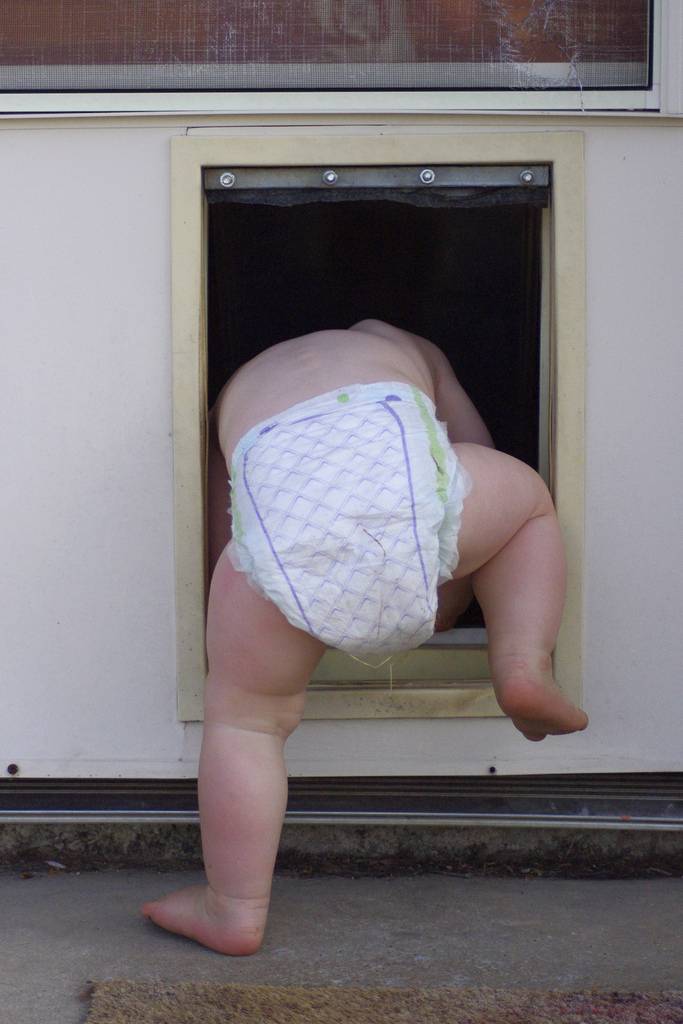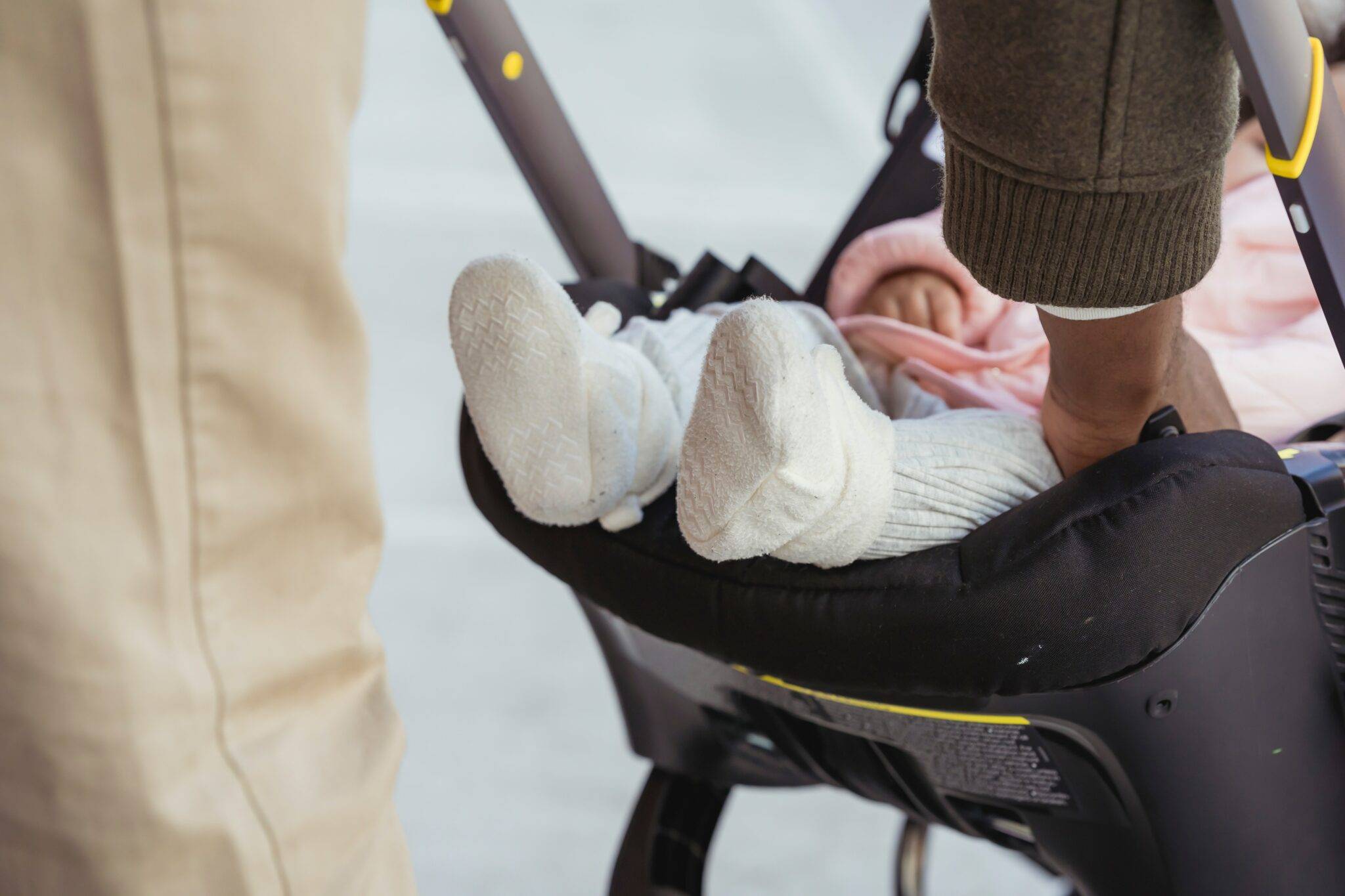Welcoming a new baby into your home is a joyous and life-changing experience but with new challenges and considerations. For families living in a two-story house, the logistics of where to place essential baby stations can impact their daily lives.
A well-organized home with strategically placed baby stations makes everyday tasks smoother and more manageable. This comprehensive guide will explore the best locations for setting up various baby stations in your two-story home, ensuring convenience, safety, and comfort for you and your little one.
Why Baby Stations Are Essential
Setting up baby stations throughout your home is crucial for creating an efficient and functional environment. Baby stations are designated areas with the necessary supplies and equipment for specific tasks such as diaper changing, feeding, and playtime.
These baby stations help streamline your routines, minimize the time spent searching for items, and ensure your baby has a safe and comfortable space. Organizing your home with strategic baby stations reduces stress and makes parenting more enjoyable.
The Essential Baby Stations
Before identifying the best locations for baby stations, it’s important to understand the essential types of stations you may need. A well-organized home for a baby includes several key baby stations:
- Diaper Changing Station: A designated area for changing diapers, equipped with all necessary supplies such as diapers, wipes, creams, and a changing pad.
- Feeding Station: A comfortable and quiet area for breastfeeding or bottle-feeding, with a chair, feeding supplies, and a water bottle for mom.
- Play Area: A safe and engaging space where your baby can play and explore, filled with age-appropriate toys and books.
- Sleeping Area: A quiet and cozy spot for naps and nighttime sleep, designed to create a soothing sleep environment.
- Storage Area: A place to store baby essentials like clothes, toys, and extra supplies, ensuring everything is organized and easy to find.
Now, let’s explore the best locations for these baby stations in a two-story house.
Diaper Changing Station
1. Nursery (Upstairs)
The nursery is often the most logical place for a diaper-changing station. It’s where most of your baby’s clothes and supplies are stored, making it easy to access everything you need. Place a changing table near the crib to set up a functional diaper-changing station in the nursery.
Ensure the table is stocked with diapers, wipes, creams, and extra clothes. Adding shelves or a small cart nearby helps keep everything organized and within reach.
2. Bathroom (Upstairs and Downstairs)
Bathrooms also serve as convenient locations for diaper changing stations. Install a wall-mounted changing table to save space and keep everything tidy. Having a diaper changing station in the upstairs and downstairs bathrooms can be helpful, as it eliminates the need to run up and down the stairs multiple times a day.
Ensure the bathroom is baby-proofed and all supplies are kept out of reach of curious little hands.
3. Living Room (Downstairs)
If your main living area is downstairs, set up a small diaper-changing station in the living room. This can be as simple as a changing pad on a low table or shelf, with a basket nearby for diaper supplies. It’s convenient for quick diaper changes during the day without going upstairs.
To maintain the aesthetic of your living room, choose storage solutions that blend with your decor, such as decorative baskets or a stylish diaper caddy.
Feeding Station
1. Nursery (Upstairs)
A comfortable chair in the nursery serves as a great feeding station, especially for nighttime feedings. Choose a chair with good back support, and add a small table for water, snacks, and feeding supplies. A cozy blanket and a nursing pillow enhance the comfort of this feeding area, making those late-night feedings more pleasant.
2. Master Bedroom (Upstairs)
For parents who prefer to keep the baby close during the night, setting up a feeding station in the master bedroom is a practical choice. A cozy chair or a corner with a soft rug creates a peaceful feeding area. This setup allows you to quickly and easily feed your baby during the night without leaving the room.
Add a small lamp with soft lighting to create a calming atmosphere for nighttime feedings.
3. Kitchen or Dining Area (Downstairs)
During the day, a feeding station in the kitchen or dining area can be very convenient. A high chair or a comfortable seat with a pillow for breastfeeding makes feeding time easy and relaxed. Being close to the kitchen means easy access to food and drinks for mom, as well as a convenient spot for preparing bottles.
Ensure the feeding area is clean and hygienic, with all feeding supplies organized and within reach.
Play Area
1. Living Room (Downstairs)
The living room is the heart of the home and a great spot for the play area. Set up a soft rug or play mat and fill the space with age-appropriate toys and books. Use baby gates to section off a safe area for your little one to explore. This allows you to keep an eye on your baby while going about your daily activities.
Rotate toys regularly to keep the play area interesting and engaging for your baby.
2. Nursery (Upstairs)
If space allows, the nursery doubles as a play area. A small bookshelf, a few bins for toys, and a comfy rug create a cozy and stimulating environment for your baby. This setup keeps the play area separate from the main living spaces, allowing for a clutter-free home.
Additionally, having a play area in the nursery encourages your baby to associate the room with positive and fun experiences.
3. Outdoor Area
If you have a safe, enclosed backyard or patio, set up a play area outside of the house. Outdoor play is great for sensory development and offers a change of scenery. Always ensure the area is baby-proofed and supervised. Use outdoor-friendly toys and create a shaded area to protect your baby from the sun.
This can be an excellent spot for activities like water play or sand play, providing different sensory experiences.
Sleeping Area
1. Nursery (Upstairs)
The nursery is the most common place for a baby’s primary sleeping area. Ensure the crib is positioned away from windows, cords, and potential hazards. A white noise machine and blackout curtains help create a soothing sleep environment.
Ensure the nursery is kept at a comfortable temperature and that the crib is free from loose bedding, pillows, or stuffed animals to reduce the risk of SIDS (Sudden Infant Death Syndrome).
2. Master Bedroom (Upstairs)
Many parents opt for room-sharing during the first few months. A bassinet or portable crib in the master bedroom allows for easy nighttime feedings and monitoring. This arrangement provides peace of mind, knowing your baby is close by.
Ensure the bassinet or crib is placed in a safe spot, away from potential hazards such as heavy curtains or cords.
3. Guest Room (Downstairs)
If your guest room is on the ground floor, it’s a convenient temporary sleeping area for your baby during daytime naps. This is especially useful if you spend time downstairs during the day. Ensure the room is baby-proofed and free from hazards. A portable crib or playpen is a great option for creating a safe sleeping area in the guest room.
Storage Area
1. Nursery Closet (Upstairs)
The nursery closet is an obvious choice for storing baby clothes, toys, and supplies. Use bins, shelves, and organizers to keep everything neat and accessible. Labeling bins and shelves helps you quickly find what you need, making it easier to keep your closet organized.
Use space-saving solutions, such as hanging organizers or stackable bins to maximize storage space.
2. Hallway Closet (Upstairs and Downstairs)
Hallway closets can be used to store baby essentials. Consider dedicating a section of a hallway closet on each floor to baby items, making it easy to grab what you need without going up and down the stairs. Use clear bins or baskets to keep items organized and easily visible.
This is a great spot for storing items, like extra diapers, wipes, and seasonal clothing.
3. Under-Stairs Storage (Downstairs)
If your home has a storage area under the stairs, it’s a great spot for storing larger items like strollers, car seats, and bulk supplies. Use shelves and bins to keep everything organized. This area can store baby gear that’s not currently in use, such as a baby swing or a portable play yard.
Keeping these items out of the way but still accessible helps keep your home organized and clutter-free.
Safety Tips for Setting Up Baby Stations
- Baby-Proofing: Ensure all baby stations are baby-proofed. This includes covering electrical outlets, securing furniture to the walls, and removing small objects that are choking hazards. Safety gates, cabinet locks, and corner protectors also add safety to the place.
- Accessibility: All baby essentials are within easy reach at each station. This saves time and ensures you keep one hand on your baby while accessing supplies. Organize items logically, keeping the most frequently used items at the front. Avoid placing items on high shelves or in hard-to-reach places.
- Comfort: Choose comfortable and supportive furniture for feeding and changing stations. You’ll spend a lot of time in these spots, so comfort is key. Test out chairs and other furniture before purchasing to ensure they meet your needs. Invest in a good-quality nursing chair and a sturdy changing table with a soft easy-to-clean pad.
- Cleanliness: Keep all baby stations clean and hygienic. Regularly disinfect surfaces and wash fabrics like changing pads, burp cloths, and feeding covers. Use washable covers and liners for changing pads and high chairs to maintain cleanliness. Use non-toxic cleaning products to ensure a safe environment for your baby.
- Organization: Use bins, baskets, and organizers to keep baby supplies neat and accessible. Labeling storage containers helps you quickly find what you need, reducing stress and saving time.
- Routine: Establish a routine for maintaining and restocking baby stations. Regularly check supplies and replenish items as needed to ensure you always have what you need on hand.
Additional Considerations for Two-Story Houses
- Communication: If you live in a larger two-story house, use baby monitors to keep track of your baby when you’re on a different floor. Video monitors provide extra peace of mind, allowing you to see and hear your baby at all times.
- Efficient Use of Space: Avoid clutter by regularly going through baby items and removing those no longer needed. Utilize vertical space with shelves and wall-mounted storage solutions.
- Emergency Preparedness: Ensure you have emergency supplies on both floors of your house. This includes a first-aid kit, extra diapers, wipes, and clothes. Having these supplies readily available is a lifesaver in urgent situations.
Choose the Best Locations of Baby Stations in Your Two-Story House 
Setting up baby stations in a two-story house requires thoughtful planning and organization, but the effort pays off in convenience and peace of mind. By choosing the right locations for diaper changing, feeding, playing, and sleeping, you create a home environment that’s safe and functional for you and your baby.
The key to a successful baby station setup is convenience, safety, and accessibility. The best baby stations fit seamlessly into your daily routines and make parenting easier. Tailor each station to fit your specific needs and daily routines. With the right setup, you ensure your home is a welcoming and efficient space for your growing family.
By following these guidelines, you ensure your home is well-prepared for the newest addition to your family. Whether it’s the upstairs nursery or the downstairs living room, each space can be transformed into a welcoming and functional area for your baby.
For more tips on creating a baby-friendly home, visit Omegapediatrics.com for additional resources and advice.
- Safety Tips for Children Celebrating the New Year 2025
- 4 Things to Consider in Creating a Safe Sleep Environment for Your Baby
Thoughtful organization and strategic placement of baby stations enhance your parenting experience, making everyday tasks more manageable and enjoyable. With careful planning with safety and convenience in mind, you create a home environment that supports you and your baby’s needs, fostering a healthy upbringing. Happy parenting!

